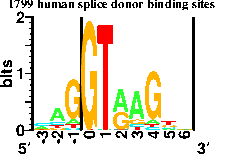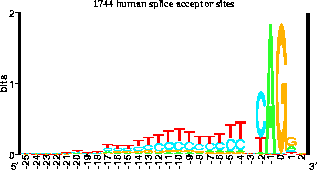
Schneider Lab
origin: 1996 Feb 20
updated: 2021 Jan 25


@article{Stephens.Schneider-splice1992,
author = "R. M. Stephens
and T. D. Schneider",
title = "Features of spliceosome evolution and function inferred from
an analysis of the information at human splice sites",
journal = "J. Mol. Biol.",
volume = "228",
pages = "1124--1136",
pmid = "1474582",
note = "\htmladdnormallink
{https://doi.org/10.1016/0022-2836(92)90320-j}
{https://doi.org/10.1016/0022-2836(92)90320-j}",
\htmladdnormallink
{https://alum.mit.edu/www/toms/papers/splice/}
{https://alum.mit.edu/www/toms/papers/splice/}",
year = "1992"}

![]()

Schneider Lab
origin: 1996 Feb 20
updated: 2021 Jan 25
![]()